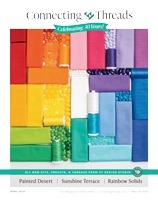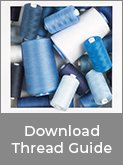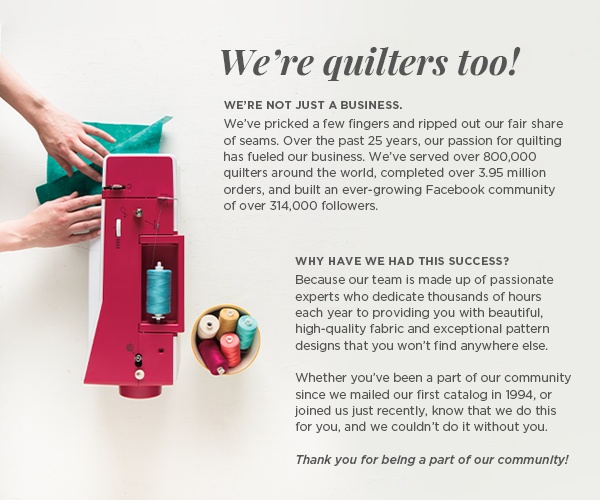How to Pick the Right Quilting Design for Your Quilt
by Mari Martin
Introduction
I have been a Longarmer for eight years and during that time it has been quite an experience to move from quilting my own quilts on the home sewing machine to a Gammill Plus Longarm. While a challenge at first, it’s been a joy to take lovely pieced tops and turn them into quilts. When this topic was suggested, it appealed to me because of my experience quilting professionally. I’ve been afforded a great deal of perspective from customers in both private and professional sectors, as their quilting needs are very different. There is an abundance of information available on quilting, but I have found this statement more than adequately sums up the extraordinary quilting experience; the pieced top and quilting design are like two individuals who, when discerningly matched, make perfect partners for the life of the quilt. When successfully achieved, the dedicated quilter will enjoy an experience made in heaven.
Individual Style
Quilting design choices are an expression of the quilter. They are a statement of your aesthetic taste; your personal preference. There are no right or wrong designs, however, some lend themselves more appropriately to one environment than another. There are a few basic guidelines you can follow in choosing how to quilt the pieced top. It takes time to learn and find just the right design for your pieced top; designs that are both images you love and that embrace the budding composition in your pieced top. Many images are available to the general public, however don’t let that stop you from creating your own. Be innovative and give yourself permission to experiment with many different designs and concepts. Most quilt books have lovely pictures of exquisitely quilted pieced tops that are great for inspiration. Make a note of what appeals to you, and use that style of image in your quilting. Most likely the images you’re drawn to will complement the tops you’ve pieced. We’ve also heard from some of our customers that they use our catalog as quilting inspiration. Since it’s a catalog, you can clip out ideas you like to keep in a binder or notebook to browse later.
Analyzing the Quilt
Many quilters say their pieced top will “tell them” what it wants, and dictates a desired “look.” Listen to this, and let your style and intuition lead you. Let’s take a look at that statement from the perspective of the quilt.
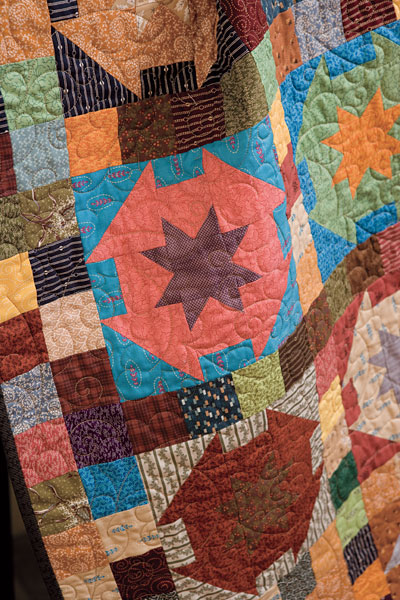
The quilt is scrappy, made from a myriad of fabrics, colors and images. The intended purpose is utilitarian. A scrappy, utilitarian quilt begs for a dense overall (edge-to-edge) pattern that can withstand a great deal of use and laundering. It can be an inexpensive meandering or stipple design; a design that isn’t costly but gives a great return for the money in use and longevity. You will want to choose something simple and dense because the busyness of a scrappy pieced top does not permit optimum visual access to the quilting design. Be practical about both style and money.

A quilt in which the pattern and fabrics are deliberately and carefully chosen, that perhaps has a specific purpose and there is much more emotional investment, calls for the same deliberation and investment in a quilt design. A careful assessment of the quilt can render optimum results. This is where you can put your money, so as to marry both piecing and quilting for lovely, heirloom results. This situation advocates detailed designs, varying images and density. Depending on the desire, the pieced top can be quilted with remarkable results using such patterns as feathering, McTavishing, echoing and skillfully executed lovely cross-hatching and stitching in the ditch. It will culminate in an heirloom that will draw admiration for years to come and certainly be a conversation starter at the very least.
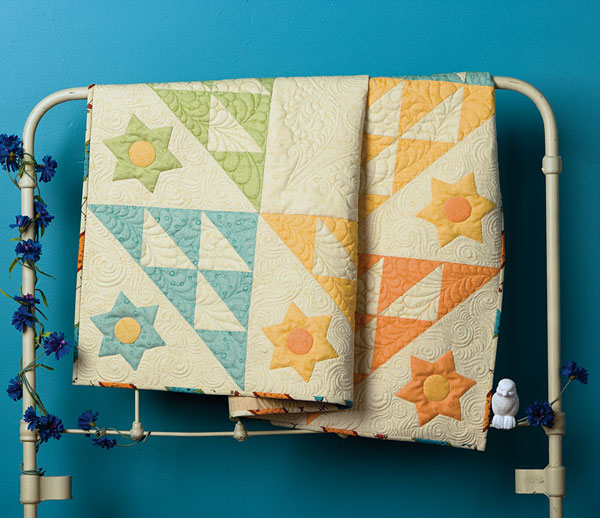
Feathering
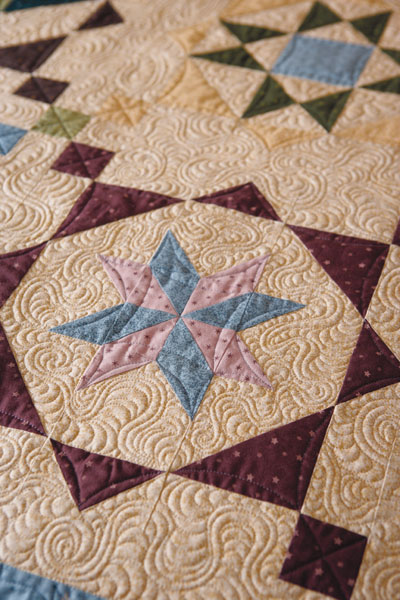
McTavishing
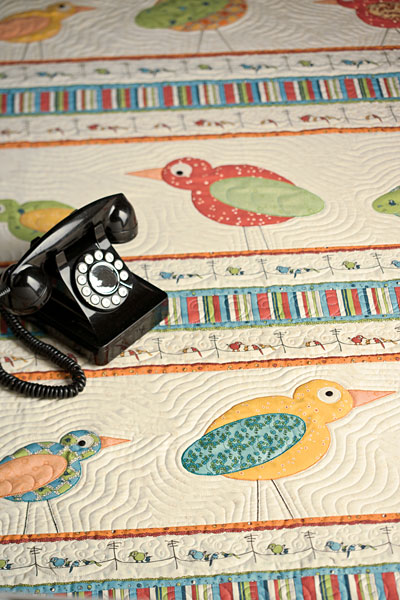
Echoing
A Longarmer’s Perspective
As a Longarmer, these are a few situations customers have presented for analysis before making a quilting decision. This will give you an idea of what to consider when taking your own pieced top to be professionally quilted.

I recommend overall (edge-to-edge) quilting designs that are semi-dense to dense for pieced tops that will be given to children, teenagers and young adults. The frequent use and laundering by these individuals demands a more durably built quilt. This situation begs consideration of your monetary investment. Since an overall charge is on the lower end of what one can spend, it would prove practical given the intended use.

Generally, custom quilting is for those pieced tops that are targeted for adults or young adults sensitive to the quality and value of a well made quilt. Custom is chosen when a pieced top is made with high quality fabrics and threads, and piecing is of high caliber. Also, custom quilting is considered when a pieced top provides areas of embellishment with simple piecing, soft colors and solid or tone-on-tone fabrics where the quilting will be front and center, so the investment can be appreciated and enjoyed. It is the kind of quilting that will enhance and embrace the pieced composition.

The example of feathering shown above, is another Heirloom quilting example.

Heirloom quilting, being on the highest end monetarily, is for the pieced top that will be entered into competition and/or used as a focal piece in the decoration of your home. It might hold a place of honor in a family and passed through generations who will love and appreciate, not only the individual who made the quilt, but the quilt itself. Heirloom quilting can be highly decorative with a great deal of movement. It is of the highest quality quilting. It will be dense, adding its own statement to the quilt but not overriding the piecing composition. Heirloom quilting will be aesthetically pleasing and intellectually stimulating. It will leave the viewer wanting. This type of quilting, when executed with great skill, can turn the pieced top into a collector’s greatest find.
Quilt Designs
Quilt tops that are visually busy because of piecing or fabric choices are more suited to an edge-to-edge (overall) pattern. When one considers the quilting will not be as visible because of the busyness of the top, try an overall to keep cost down. Also, choose a more organic design with a visually linear quilt, and with quilts that contain curved piecing and/or appliqué, consider a linear quilting design such as cross-hatching for a background filler. The juxtaposition of linear and organic will render a very moving visual encounter.
Any quilt that contains areas of calm fabrics such as solids, tone-on-tones and gentle, soothing colors/images will allow your quilting design's stage presence. Take advantage of the negative space these fabrics provide and embellish your quilt in those areas with feather wreaths, ornate feather patterns, or designs with a great deal of movement such as McTavishing. Allow the remaining areas a simple, deliberate pattern of movement. The combination is striking and very complementary to the quilt as a whole.
Quilting Your Own Quilt
It is entirely possible for you to quilt your own quilts at home. I've always recommended that customers try to quilt their own when their pieced top is the size of a table runner to lap quilt. Quilting your own pieced tops will give you more knowledge and experience when making requests for a pieced top that needs to be quilted by a professional. It is reasonable to begin this task by stitching in the ditch and cross-hatching. This is easily done with a walking foot. I began quilting on my home sewing machine before I purchased a Longarm and once I became comfortable with sewing straight lines I moved to using my darning foot with the feed dogs recessed. Once I became successful with organic images I was ready for a Longarm. When quilting at home there are a number of ways to approach quilting your pieced top. Here are a few suggestions that will make your experience more successful:
Purchase clear cellophane and lay on your pieced top (any clear plastic will work). Pin or tape the cellophane to the quilt. With a permanent marker/Sharpee, start drawing designs on the cellophane using the block underneath as your parameter to gauge the images rendered. You can make multiple designs for each block or use the same design for all blocks. Once you are pleased with your design, transfer it to Golden Threads or another tracing paper. Pin to your pieced top and quilt away!
With the same process, you can draw a design for one border and corner and use the same rendering for the remaining borders. When quilting multiple borders, you can quilt separate designs in each border or one design over all borders.
Experiment and play with many designs as with each challenge you will improve and learn. Don’t let anything stand in your way. If you feel you might waste fabric consider the size of your stash! Practice! Practice! Practice! You will never enjoy the exhilarating experience of quilting unless you start. Every person who quilts their own quilts went through this process, failed and began again until becoming proficient. It is well worth the risk to have a lovely quilt hanging in your home and knowing you created that beauty!
For more tips on quilting on your home machine, read Sharla’s Machine Quilting Basics tutorial or Melissa's Golden Threads Q






